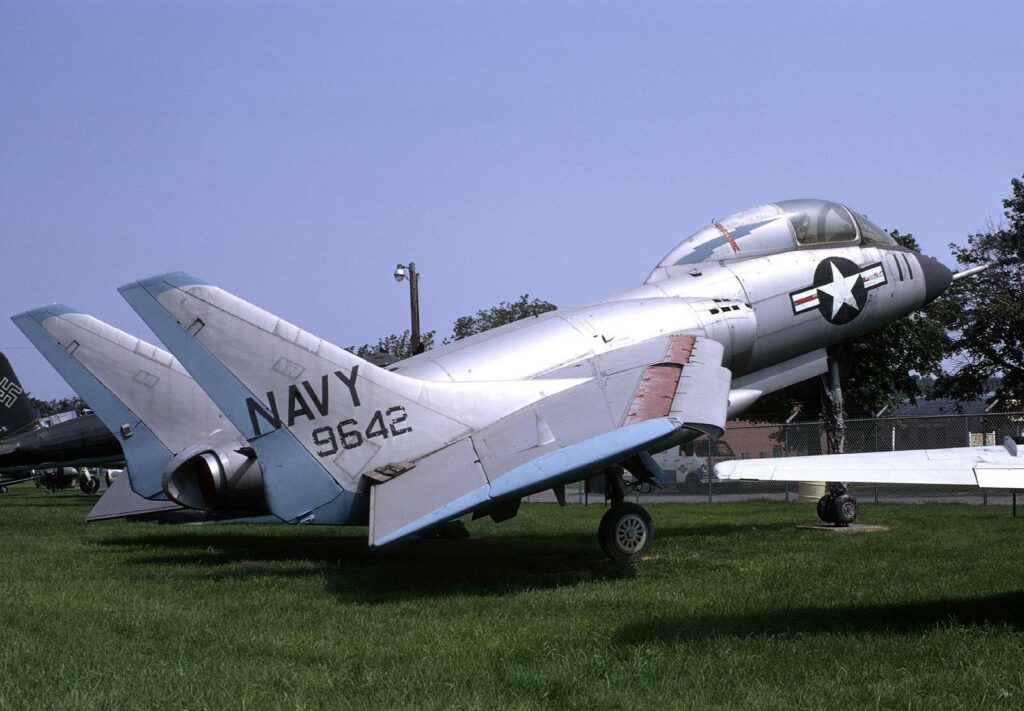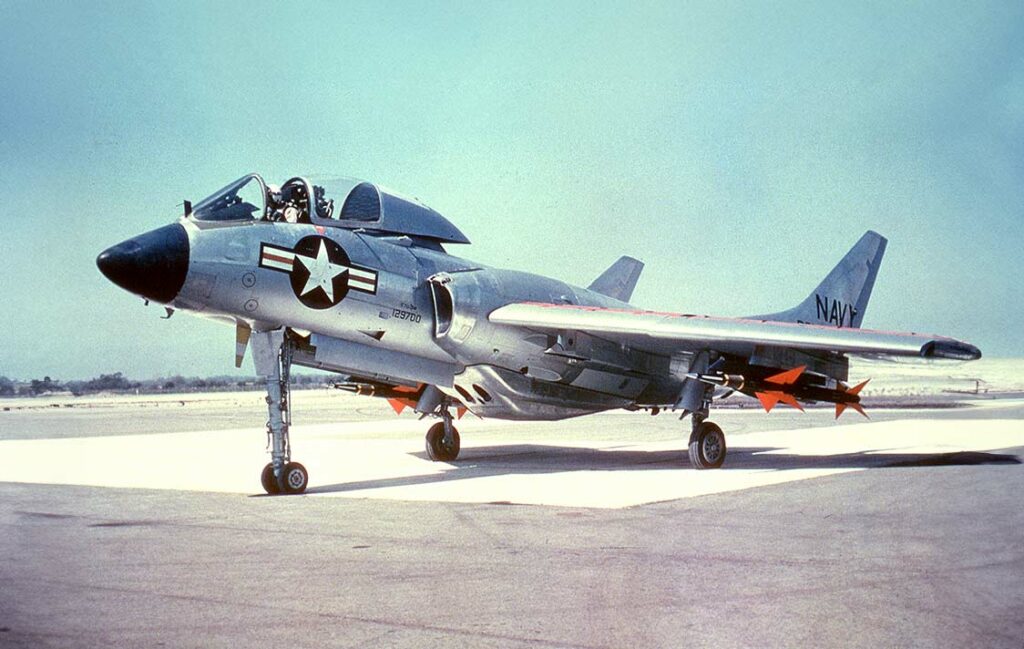The F7U Cutlass, a twin-engine, carrier-based jet fighter, was known for its unique tailless design and advanced aerodynamics.
The Chance Vought F7U Cutlass stands out in military aviation history for its distinctive design and technological innovations. Developed in the late 1940s and early 1950s, this carrier-based jet fighter was one of the first generation jet fighters in the United States Navy. Its tailless and swept-wing design was revolutionary, promising high speeds and agility. Equipped with two Westinghouse J34 turbojet engines, it achieved speeds surpassing 600 mph. Despite its futuristic design, the F7U faced numerous challenges, including engine reliability issues and handling difficulties. It was a bold step into the jet age for carrier aviation but had a relatively short service life due to its limitations and the rapid advancement of jet technology. The F7U Cutlass was a critical stepping stone in the evolution of naval aviation, pushing the boundaries of aerodynamics and engineering during its era.
The Chance Vought F7U Cutlass epitomizes the adventurous and experimental spirit of early jet-age aviation.

History of the Development of the Chance Vought F7U Cutlass
In the aftermath of World War II, the United States Navy sought to modernize its fighter fleet by transitioning to jet-powered aircraft. The Chance Vought F7U Cutlass was a response to this need, representing a significant leap in technology and design philosophy.
The development of the F7U began in the late 1940s, a period marked by rapid technological advancements and a shift from propeller-driven to jet-powered aircraft. The Navy needed a fast, agile fighter that could operate from aircraft carriers and match or exceed the performance of land-based jet fighters.
The program was initiated by Chance Vought, a company with a history of creating innovative aircraft. The first prototype of the F7U Cutlass flew on September 29, 1951. Its design was heavily influenced by German aerodynamic research from World War II, particularly the work on tailless aircraft.
The F7U did not have a specific NATO nickname, as such designations were more commonly applied to Soviet aircraft during the Cold War era.
Design of the Chance Vought F7U Cutlass
The design of the F7U Cutlass was revolutionary for its time. It featured a tailless configuration and a 35-degree swept-wing design, aiming to maximize speed and agility. The aircraft’s overall length was 44.3 feet (13.5 meters), with a wingspan of 38.7 feet (11.8 meters). The unique wing design allowed for a lower landing speed, beneficial for carrier operations.
Powered by two Westinghouse J34 turbojet engines, the Cutlass had an innovative powerplant arrangement. However, the engines were underpowered for the aircraft’s weight, affecting its overall performance. Additionally, the F7U’s hydraulic system, crucial for controlling the flight surfaces, was prone to failures.
Despite these drawbacks, the design of the F7U Cutlass was ahead of its time, incorporating features like an all-moving vertical stabilizer and advanced aerodynamics. Its cockpit layout and ejection seat were also state-of-the-art, considering the era’s standards.
Performance of the Chance Vought F7U Cutlass
The performance of the F7U Cutlass was a mixed bag. The twin Westinghouse J34 engines, each producing 3,400 pounds of thrust, propelled the aircraft to a maximum speed of over 600 mph (965 km/h). However, the aircraft struggled with acceleration and climb rate due to the underpowered engines. Its service ceiling was around 40,000 feet (12,192 meters), and it had a range of approximately 1,030 miles (1,660 kilometers).
When compared to contemporaries like the Grumman F9F Panther, the F7U’s performance was inferior in terms of reliability and ease of handling. Its advanced design could not compensate for the shortcomings in power and flight characteristics.

Military Use and Combat of the Chance Vought F7U Cutlass
The F7U Cutlass was primarily used as a fighter and interceptor in the United States Navy. However, its operational history was marred by accidents and reliability issues, which limited its combat effectiveness. The aircraft was armed with four 20 mm cannons and could carry air-to-air rockets, giving it respectable firepower.
The F7U saw limited combat service. Its most notable use was during the early stages of the Cold War for air defense and fleet protection roles. The Cutlass did not participate in any major conflicts or battles and was not exported to other countries.
The aircraft was eventually phased out of service in the late 1950s, replaced by more capable and reliable fighters like the McDonnell Douglas F-4 Phantom II. The F7U’s retirement marked the end of an ambitious but ultimately flawed attempt to push the boundaries of naval aviation technology.
The Chance Vought F7U Cutlass, despite its shortcomings, played a crucial role in the evolution of jet-powered naval aviation. Its innovative design and technological attempts paved the way for future advancements in aircraft engineering. While not a successful fighter in the traditional sense, the F7U Cutlass is remembered as a bold experiment that helped shape the future of military aviation.
Back to the Fighter Jet section.